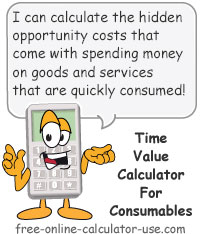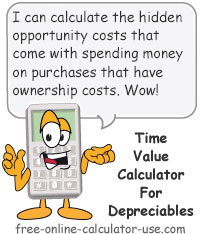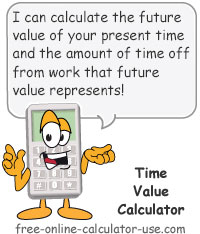IMPORTANT: Numeric entry fields must not contain dollar signs, percent signs, commas, spaces, etc. (only digits 0-9 and decimal points are allowed).
Click the Terms tab above for a more detailed description of each entry.
Step #1:
Enter the percentage return you expect to earn on future investments.
Step #2:
Enter your hourly wage.
Step #3:
Enter the number of years you would like to calculate costs for.
Step #4:
Enter the name of the consumable.
Step #5:
Enter the number of times you purchase the item per selected time period.
Step #6:
Enter purchase price of the consumable, including sales tax.
Step #7:
Enter the cost of a lower priced substitute (generic, store brand, do it yourself).
Step #8:
Click the "Calculate Opportunity Costs" button. This will populate the opportunity cost comparison chart along with a written summary of the results.




Follow me on any of the social media sites below and be among the first to get a sneak peek at the newest and coolest calculators that are being added or updated each month.